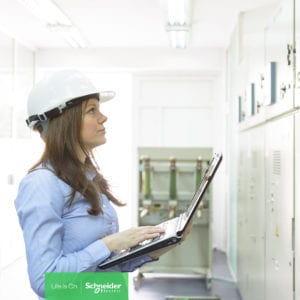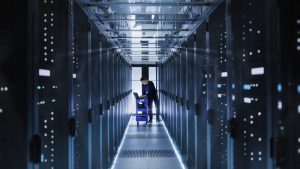At the recent DatacenterDynamics ZettaStructure in London, I met with Dave Johnson, Executive Vice-President for the IT Division at Schneider Electric. Dave was at the well-known conference and expo to participate in a plenary panel entitled “Driverless cars, serverless data centers and the rise of ubiquitous zettastructures.” If an increase in data center automation is going to be vital for future technology roll-outs, this seemed like a good opportunity to discuss recent developments at Schneider Electric with him, and I was especially keen to find out more about Schneider Electric’s EcoStruxure.
EcoStruxure Defined
Dave explained that EcoStruxure is Schneider Electric’s open, interoperable, IoT-enabled system architecture and platform. Within the data center, EcoStruxure for data center provides a three-level solution that begins with connected devices in the physical layer, which includes power back-up (UPSs) and power distribution units (PDUs), as well as switchgear and cooling equipment. Ubiquitous sensors mean that a lot of data is being produced by these devices, and it is this monitoring effort which is foundational to optimizing facilities, eventually even enabling them to run in a fully autonomous state.
From there, the next layer is what Schneider Electric has called edge control. This is made up of software and monitoring solutions that watch all the connected devices and what’s going on in the data center. Edge computing is in high growth mode, as companies deploy ever more complex hybrid approaches to solving their data center requirements. Edge presents unique challenges as facilities are often remote and without local IT staff support. Their life cycle is long and they are required to be easy to manage, secure and deploy while also being resilient. Also, software is key to successful edge data center operations.
The third and highest layer is what Dave describes as “Absent Analytics” which enable resiliency and visibility through live sensor data, predictive analytics and smart alarming. As more and more data is collected to create a large data lake, analytics can do a much better job of understanding how equipment behaves in all kinds of operational and environmental conditions. In doing so, those operating data centers will have access to actionable information to increase the reliability and efficiency of the facilities they manage.
Open Architecture
I asked Dave if only organizations already using Schneider Electric products and services were able to take advantage of EcoStruxure for data center and he assured me that it’s absolutely meant to be an open architecture and open platform for all vendor’s equipment. Dave said that Schneider Electric has recognized that most, if not all customers, have mixed environments. While it would obviously be nice if companies utilized as much Schneider Electric equipment as possible, understandably most have equipment from a range of companies built into facility systems. EcoStruxure is specifically intended to also add significant value in a multi-vendor environment.
The evolution to cloud-based architectures makes it both easier and faster for customers to deploy monitoring solutions. It also provides a more scalable approach to cloud-based analytics – for customers managing multiple, distributed IT environments- EcoStruxure for Data Center enables data to be collected and analyzed in a secure way that was impossible with pre-cloud era tools. It also brings the promise of more resilient and efficient systems, said Dave. If you’d like to find out more about how EcoStruxure can help you manage your data center more efficiently, watch our interview.



